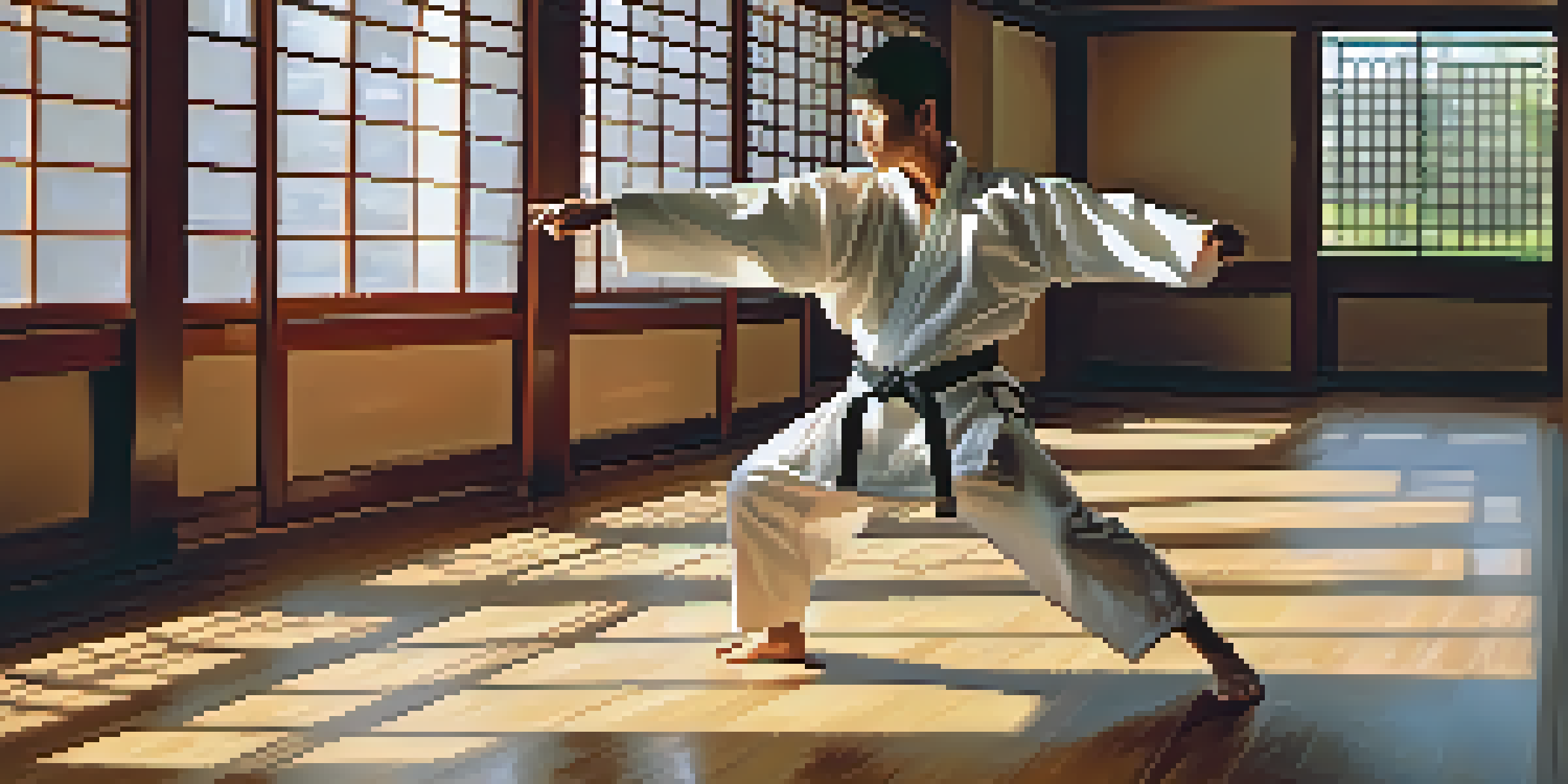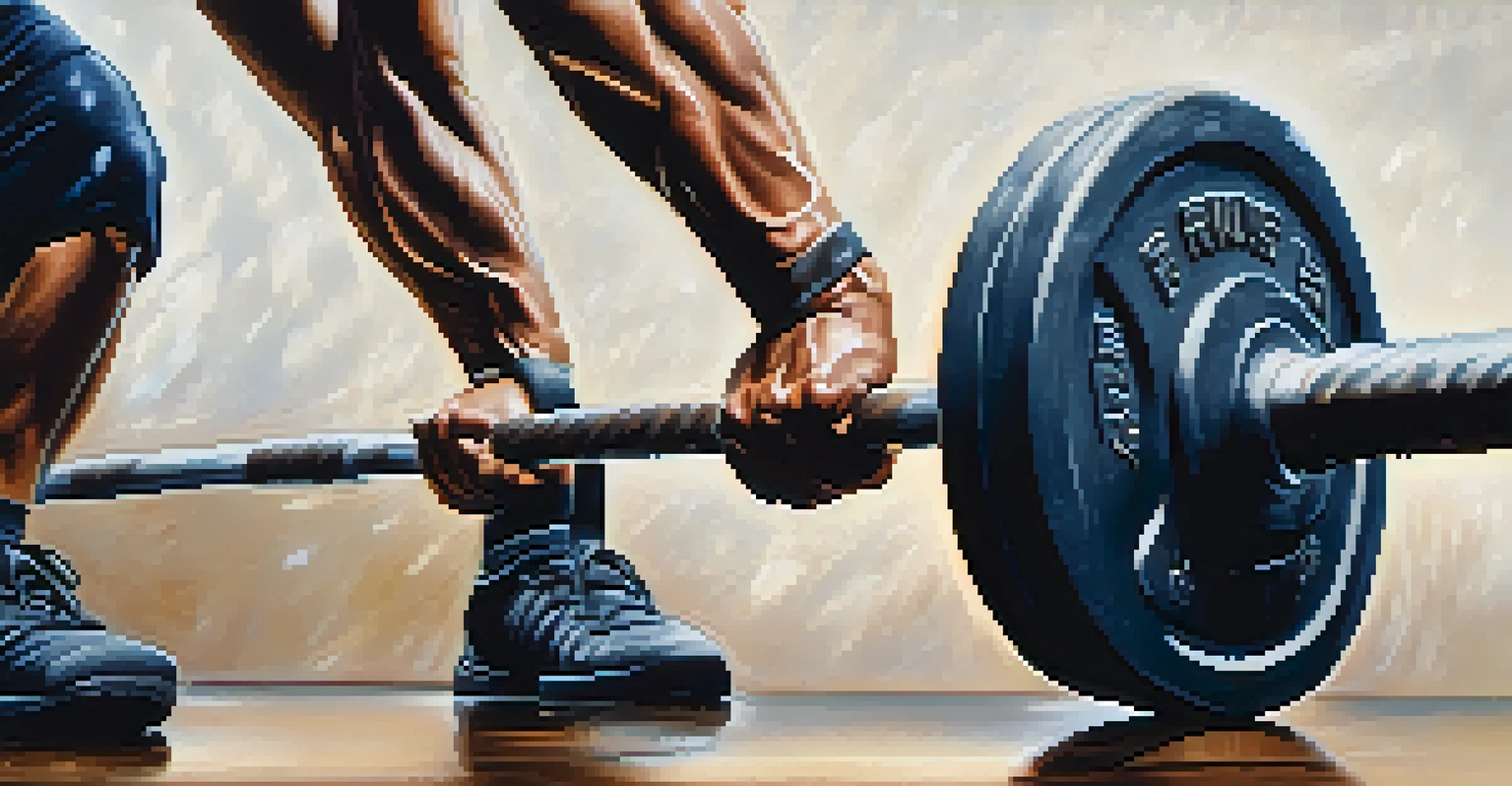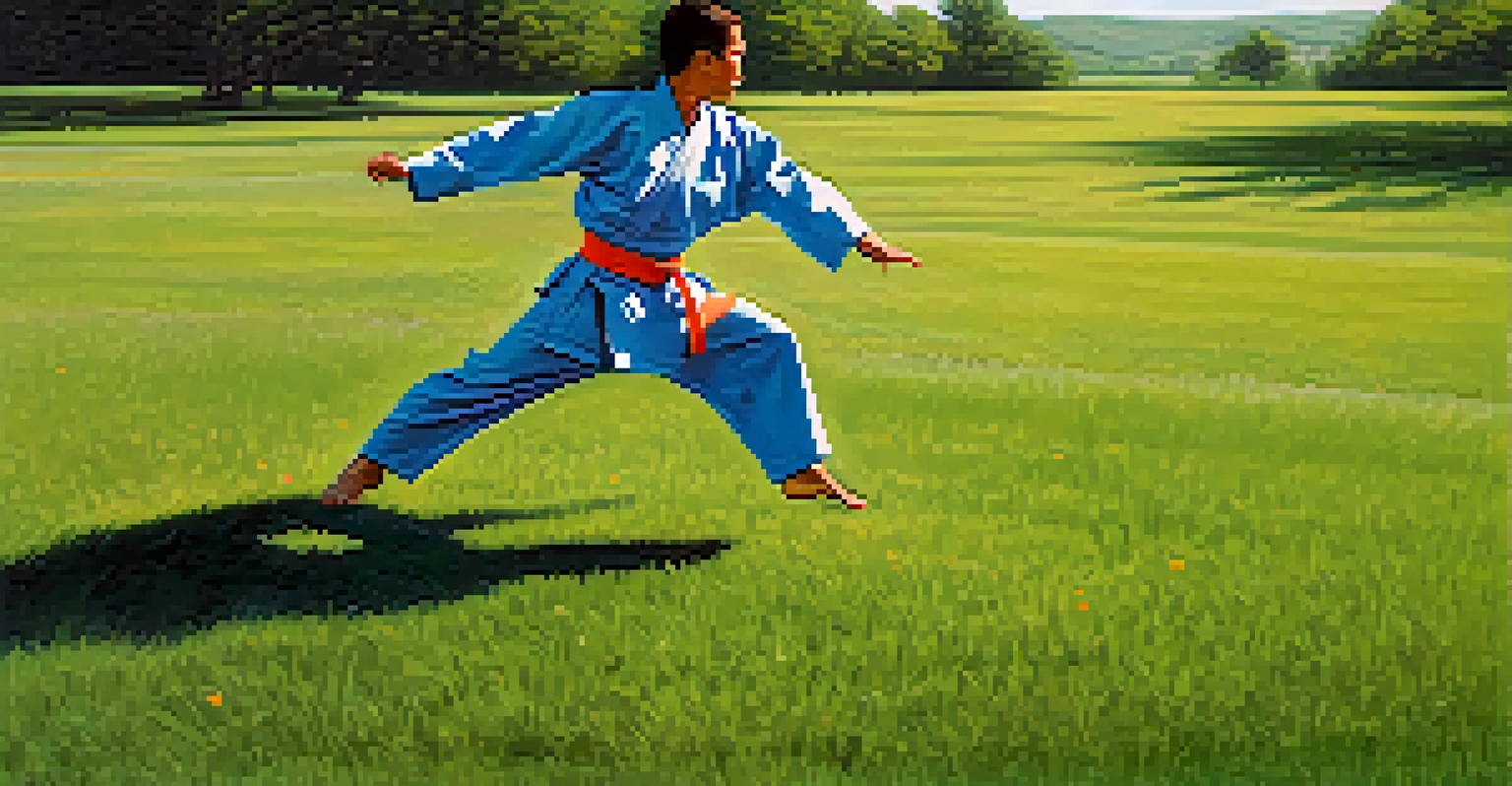Integrating Fitness into Martial Arts Training Regimens

Understanding the Synergy Between Fitness and Martial Arts
Integrating fitness into martial arts training isn’t just beneficial; it’s essential. Both disciplines share a common goal: enhancing physical performance. By understanding their synergy, martial artists can boost their strength, flexibility, and endurance, leading to improved techniques and overall effectiveness. Think of it like a car; the better the engine runs, the smoother the ride.
The more you sweat in training, the less you bleed in battle.
For instance, a martial artist with a strong cardiovascular base can execute techniques with greater speed and precision. Similarly, strength training helps in delivering more powerful strikes. Thus, integrating fitness doesn’t just support martial arts training; it elevates it to new heights.
Related Resource
Ultimately, the combination creates a well-rounded athlete, ready to tackle the challenges of both the dojo and real-life situations. This holistic approach not only fosters skill development but also promotes long-term health and resilience.
Key Fitness Components for Martial Artists
When considering fitness for martial arts, it's important to focus on several key components: strength, endurance, agility, and flexibility. Each of these elements plays a vital role in enhancing martial arts skills. For example, strength training can significantly improve your striking power and grappling effectiveness.

Endurance is crucial, especially in longer training sessions or competitions, as it determines how well you can maintain peak performance. Agility drills help you move swiftly and change direction seamlessly, which is often the difference between success and failure in a match. Lastly, flexibility aids in executing techniques smoothly and preventing injuries.
Fitness Enhances Martial Arts Skills
Integrating fitness into martial arts training boosts strength, flexibility, and endurance, which leads to improved techniques and effectiveness.
By incorporating exercises targeting these areas, martial artists can develop a training regimen that complements their specific needs in martial arts. This targeted approach ensures that each component is addressed, creating a balanced and effective training plan.
Creating a Balanced Training Schedule
To effectively integrate fitness into martial arts, a balanced training schedule is key. Striking a harmony between martial arts practice and fitness workouts ensures that neither aspect is neglected. A suggested plan might include alternating days of martial arts training with strength and conditioning workouts, allowing for recovery and skill retention.
Strength does not come from physical capacity. It comes from an indomitable will.
For instance, you might dedicate Mondays and Wednesdays to martial arts techniques, while Tuesdays and Thursdays focus on strength training. This not only prevents burnout but also keeps the body engaged and responsive. Additionally, incorporating active recovery days with light cardio or yoga can enhance flexibility and recovery.
Related Resource
Ultimately, the goal is to create a routine that feels manageable and sustainable. A well-structured schedule can lead to more significant improvements in both fitness levels and martial arts proficiency over time.
Incorporating Strength Training Into Your Regimen
Strength training is a cornerstone of fitness that can yield immense benefits for martial artists. By integrating exercises like squats, deadlifts, and bench presses, practitioners can develop the muscle groups essential for powerful strikes and effective grappling techniques. Imagine trying to chop wood; without strength, that axe won't get very far.
Moreover, bodyweight exercises such as push-ups, pull-ups, and lunges can be incredibly effective as they mimic the movements used in martial arts. These exercises not only build strength but also enhance body control and balance, crucial for executing techniques with precision.
Key Components: Strength and Endurance
Focusing on strength, endurance, agility, and flexibility is vital for martial artists to enhance their performance in both training and competitions.
Incorporating resistance training at least two to three times a week can significantly boost overall performance. Remember, the goal is to build functional strength that translates directly into martial arts, so focus on compound movements that engage multiple muscle groups.
Improving Endurance for Lasting Performance
Endurance training plays a pivotal role in martial arts, enabling practitioners to maintain energy levels throughout rigorous sessions or competitions. Activities like running, cycling, or swimming can enhance cardiovascular fitness, allowing martial artists to train harder and longer. Picture a boxer; the last rounds are often the toughest, and endurance can be the deciding factor.
Incorporating interval training—alternating short bursts of high-intensity work with rest—can also be particularly effective. This simulates the stop-and-go nature of martial arts, helping improve both aerobic and anaerobic capacity. For example, sprinting for 30 seconds followed by a minute of walking can mimic the intense exchanges during a sparring match.
Related Resource
By committing to regular endurance workouts, martial artists can build the stamina needed to perform at their best, even during the most exhausting sessions. This endurance translates to better focus and technique, ultimately leading to improved performance.
Enhancing Agility Through Dynamic Training
Agility is essential in martial arts, as it allows for quick movements and reactions. Dynamic training drills, such as ladder drills, cone drills, and shuttle runs, can significantly improve agility. Imagine a cat; its ability to change direction swiftly is what keeps it agile and smooth, a skill every martial artist should embody.
These drills not only improve footwork but also enhance coordination and balance. Regularly including agility workouts in your regimen can lead to quicker responses during sparring or competition scenarios. The goal is to develop the ability to move fluidly in any direction, which is critical in martial arts.
Balanced Training Schedule is Key
Creating a balanced training schedule that alternates martial arts practice with fitness workouts ensures comprehensive skill development and recovery.
Incorporating agility training at least once a week can yield noticeable improvements in performance. As martial artists become more agile, they can execute techniques with greater ease and avoid potential strikes from opponents.
Flexibility Training for Injury Prevention
Flexibility is often an overlooked component in martial arts training, yet it can significantly reduce the risk of injuries. Regular stretching routines, including static and dynamic stretches, can enhance range of motion and prepare the body for demanding movements. Think of flexibility as a rubber band; the more pliable it is, the less likely it is to snap under pressure.
Incorporating yoga or Pilates into your weekly routine can also improve flexibility while promoting mental focus and relaxation. These practices not only help prevent injuries but also enhance recovery, making them a valuable addition to any martial artist's training regimen.

Dedicate time at the end of each training session for stretching exercises. This not only aids in recovery but also reinforces the importance of maintaining flexibility, allowing martial artists to perform techniques more effectively and with less risk.